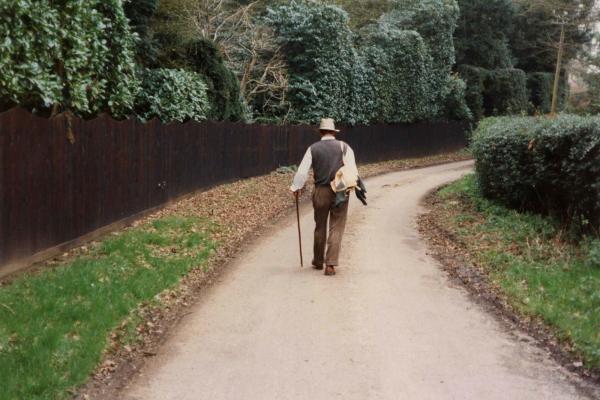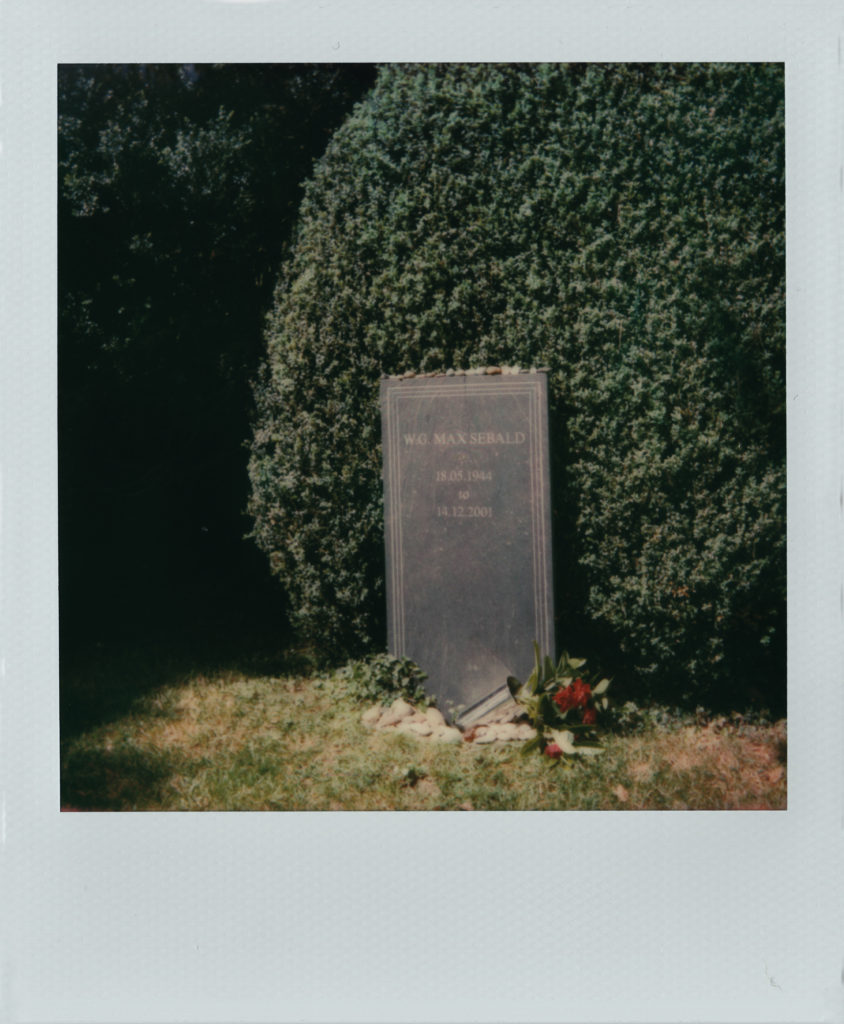In the final instalment of his Analogue Ambles column, Adam Scovell visits the East Anglian grave of German writer and academic W. G. Sebald, who died on this day in 2001.

Few writers have produced so many potential maps for literary pilgrimage, and from so few works, as W.G. Sebald. With place occupying a key role in his novels, to the extent that several of them can be literally walked and explored in the same detail as the books’ various narrators, the writer unconsciously created journeys and highlighted places that now sit unusually within what could be called the “Sebaldian.” Whether abandoned weapons testing facilities, gloomy London train stations or East Anglian countryside, the writer marked the atmospheric places he wrote about with such effect that he spawned a desire to explore, to walk after him, with the sort of impassioned level of curiosity that most local tourist boards would be envious of.
Sebald, or “Max” to his friends, was born in Bavaria in 1944. In the mid 1960s, after studying in Germany and Switzerland, he travelled to England where he first taught at the University of Manchester. He soon settled in Norfolk, working his way up the academic ladder at the University of East Anglia. Though publishing late in life, Sebald’s writing career took off quickly. His novels The Emigrants andThe Rings of Saturn, translated into English in 1996 and 1998, secured him an astonishingly rapid literary respect. Such a rise in the literary pantheon was unparalleled, so his early death on the 14thof December 2001 cut short a career that clearly still had more to give.
Having become enamoured with his work over the last decade, and with his novels explicitly connected to a sense of place, I had visited a number of Sebald-related sites in the intervening years. From the East Anglian locations walked in The Rings of Saturn to the East London haunts that found their way into Austerlitz, I’d spent a great deal of time walking after Sebald, chiefly out of curiosity. There’s little doubt that, with his mode of writing still ultimately being fictional, following in the footsteps of his narrators is a pastime that generally reveals discrepancies rather than synchronicities between novels and places. The walks hunting for the locations are fulfilling in themselves, but rarely a key to the mysteries that seemingly litter his books.
Of all of the places seemingly marked by the writer, the one I had avoided for so long was his grave. There could be no misreading of this place, no characterisation, curating or editing on the writer’s part. It was a depressingly early full stop to what should have been a much longer series of semicolons. But, having searched for so many Sebaldian places, sometimes through endless research, other times through wandering, it felt the right point to end what had been almost a decade of obsession. Aside from a future visit to the île Saint-Pierre, the Swiss island jutting into Lake Biel which could be excused as a future trip for connections to Jean-Jacques Rousseau and Robert Walser as much Sebald, this felt like the last page of his landscape.
Sebald is buried in the churchyard of St. Andrew’s in Framingham Earl, not far from where he lived in The Rectory at Poringland. The church is a typically East Anglian building; bustling with antiquity and wildlife in equal measure due to the surrounding countryside and the sheer lack of urban development around it. Though possessing a beautiful Norman round tower, which must have stared out as a beacon across the fields several hundred years ago, the church has also been argued as containing Saxon heritage too. In other words the site as a church is an incredibly old one; suitable as a resting place for a writer so often taken out of time.
The day of the visit was warm and sunny. I was already in Suffolk for the appropriately Sebaldian task of filming at Orford Ness and its laboratories, featured heavily in The Rings of Saturn. My father was keen to travel further north after our filming, in search of a great grey shrike that had been blown onto the Norfolk coastline. Before heading in search of the bird, he kindly drove me to Framingham Earl to see Sebald’s grave. The village’s roads were submerged in greenery, turning the A roads and byways into endless, shadowy holloways. Though a few, incredibly large properties littered the roads, there was no sign of people. The place was absence made manifest via woods and fields.
We walked around the whole of the churchyard, my father looking at the butterflies as I admired the old graves and architecture. Soon, behind its own dark green bush, Sebald’s grave came into sight. Made of a jet-black stone, the grave stood out among the mostly lichen-covered neighbours crumbling into the ground, as well as for its variety of mementos; from a vase of flowers to a variety of pebbles carefully placed along the grave’s head. Blue damselflies seemed strangely drawn to the spot, hovering and zipping about in the air like quicksilver; the insects are fond of his grave. Having followed this man so often, treading his ghost-steps, it felt like the end of the line; not so much the end of the obsession but certainly its peak, where the admiration could finally fade back into the unconscious. As the Polaroid developed in the thin darkness between the pages of a book, it felt, finally, that it was time to stop following.
